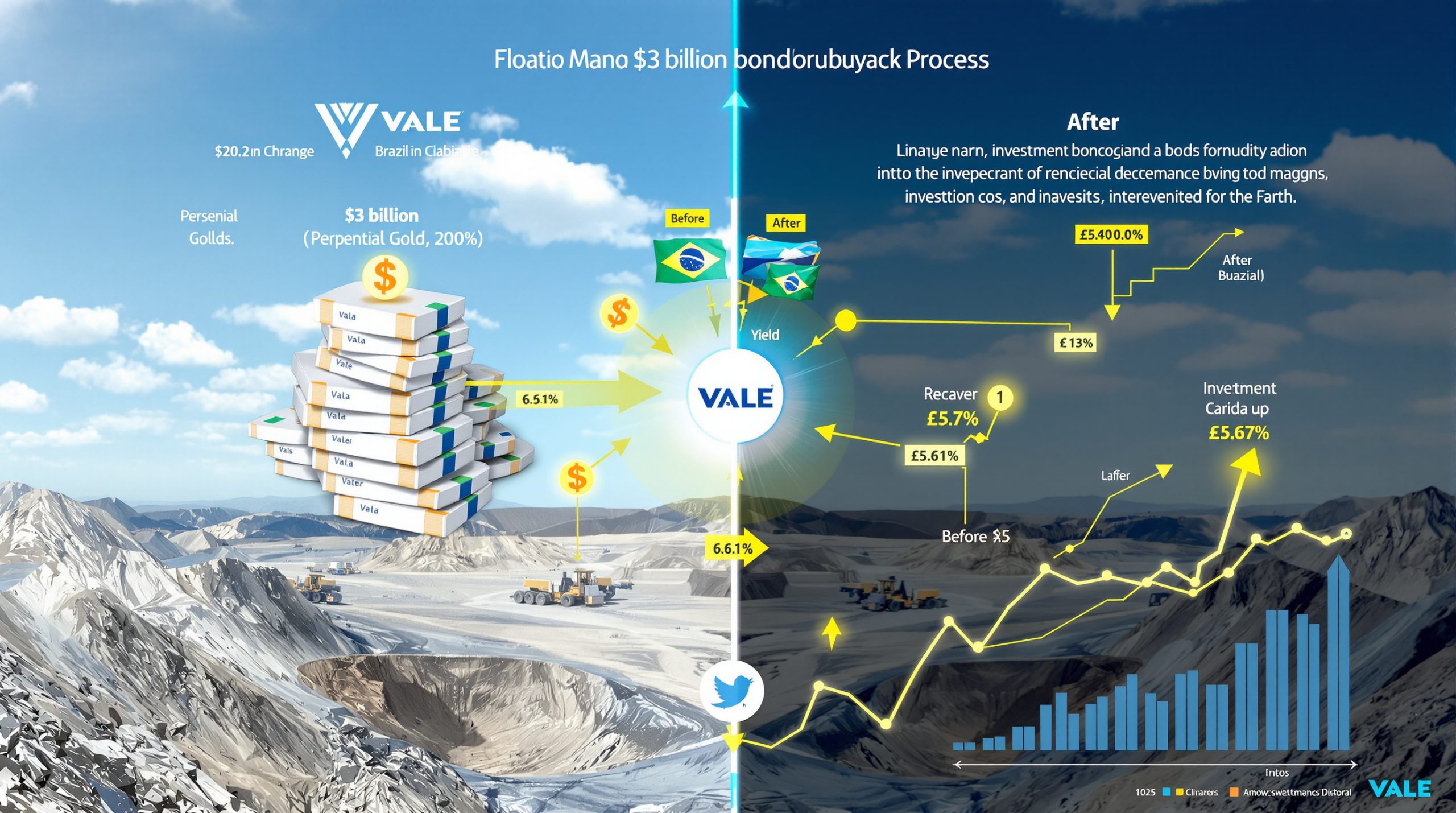Mining Employment Growth in South Africa: Recent Trends and Economic Impact
South Africa's mining sector has demonstrated remarkable resilience in employment creation, adding 2,000 jobs in the second quarter of 2023 despite broader economic challenges. This quarter-on-quarter growth brought total formal mining employment to approximately 468,000, showcasing the sector's ability to generate opportunities when other industries are contracting. The positive employment trend in mining employment increase in South Africa stands in stark contrast to the overall South African economy, which experienced a significant decline in non-agricultural jobs during the same period.
The employment growth reflects the mining industry's adaptability and its critical role in South Africa's economic landscape. While challenges persist, the sector's ability to maintain and even expand its workforce demonstrates its fundamental importance to the nation's economic stability and growth potential.
How is mining employment performing in South Africa?
The South African mining industry has shown notable resilience in recent employment statistics. According to data from Statistics South Africa's Quarterly Labour Force Survey, the mining sector has been maintaining steady employment levels despite facing numerous operational challenges.
In recent quarters, mining employment has fluctuated between 450,000 and 470,000 formal jobs. The sector's employment resilience becomes particularly significant when compared to broader economic trends, where many sectors have experienced substantial job losses during the same periods.
Key employment statistics
- Mining sector added 2,000 jobs quarter-on-quarter in recent reporting periods
- Total formal mining employment reached approximately 468,000
- Total non-agricultural employment declined by 80,000 in the same quarter
- The mining sector represents approximately 4.5% of total formal employment in South Africa
This growth occurs despite significant operational challenges, including electricity supply constraints, logistical bottlenecks, and regulatory uncertainties that have affected investment decisions. The sector's ability to maintain and even grow employment during difficult economic periods underscores its importance to South Africa's economic stability.
Which mining subsectors are driving employment growth?
The quarterly employment increases in South African mining have been primarily driven by four key subsectors, each making distinct contributions to overall industry employment growth.
Platinum Group Metals (PGMs)
PGM mining continues to be a major employment driver, particularly in operations located within the Bushveld Complex region. Companies like Anglo American Platinum and Impala Platinum have maintained relatively stable workforces despite fluctuations in metal prices. The growing demand for PGMs in automotive catalytic converters and emerging hydrogen technologies has helped sustain employment in this subsector.
Gold
Despite declining production volumes over the decades, South Africa's gold mining sector continues to provide significant employment, particularly in Gauteng and Free State provinces. Companies like Harmony Gold and Gold Fields have implemented strategies to extend mine life and maintain employment levels despite the challenges of mining at increasingly deeper levels.
Chrome
Chrome mining, concentrated primarily in the North West and Northern Cape provinces, has shown employment resilience. This subsector benefits from South Africa's position as a leading global supplier of chrome ore, with the country accounting for approximately 40% of global chromite reserves. Firms like Samancor Chrome and Tharisa have maintained steady employment levels.
Coal
The coal mining sector remains a substantial employer despite global trends toward decarbonization. Operations in Mpumalanga and Limpopo provinces continue to support significant employment numbers. However, the sector faces long-term challenges related to climate commitments and the sustainable mining transformation, which may affect future employment prospects.
These four subsectors collectively account for the majority of mining employment in South Africa, with their relative contribution fluctuating based on commodity price cycles, operational challenges, and regulatory developments.
How does mining employment compare to other sectors?
The mining sector's employment performance stands out when compared to other major sectors of the South African economy. While mining has shown resilience with recent quarterly growth, several other sectors have experienced significant job losses.
Employment changes by sector
| Sector | Employment Change (Year-on-Year) |
|---|---|
| Community services | -225,000 |
| Manufacturing | -18,000 |
| Mining | -6,000 |
| Transport | -3,000 |
| Trade | -1,000 |
| Electricity | +1,000 |
| Business services | +23,000 |
While mining did show a modest year-on-year decline of approximately 6,000 jobs, its recent quarterly growth suggests a potential recovery trend that contradicts the broader economic downturn. This performance is particularly noteworthy given the scale of job losses in community services and manufacturing sectors.
The mining sector currently accounts for approximately 4.5% of formal employment in South Africa, but its economic impact extends far beyond direct employment through its extensive supply chains and support for secondary industries. Additionally, mining jobs typically offer higher wages compared to many other sectors, magnifying the economic contribution per employee.
What factors are affecting mining employment sustainability?
The sustainability of employment in South Africa's mining sector faces complex challenges across multiple time horizons. Understanding these factors is critical for stakeholders seeking to support continued employment growth in the industry.
Short to medium-term factors
Several immediate factors are influencing the mining sector's ability to retain and create jobs:
- Trade negotiations outcomes: International trade agreements and tariff impacts on investments significantly impact export-oriented mining operations
- Infrastructure reliability: Ongoing electricity supply challenges and logistics constraints affect operational viability
- Policy stability: Regulatory predictability influences investment decisions and operational planning
- Global commodity market conditions: Price volatility affects project development and operational continuity
- Exchange rate fluctuations: The rand's value significantly impacts both costs and revenue in this export-oriented sector
According to the Minerals Council South Africa, addressing these factors is essential for maintaining current employment levels and enabling future growth.
Long-term structural challenges
For sustainable employment growth, South Africa must address several persistent structural constraints:
- Creating a predictable investment environment: Regulatory consistency and policy certainty are prerequisites for capital-intensive mining investments
- Implementing effective reforms in network industries: Electricity, transport, and water infrastructure require significant improvement
- Restoring electricity generation capacity: Power supply constraints continue to limit operational capacity and expansion
- Improving rail and port infrastructure: Logistics bottlenecks severely restrict export volumes and impact operational efficiency
- Skills development: Evolving mining industry evolution requires workforce adaptation and continuous skills upgrading
- Managing the energy transition: Climate considerations increasingly affect investment decisions, particularly in coal mining
"Reforms in the network industries continue to be aimed at recouping lost inefficiencies. For example, electricity generation has yet to reach the levels achieved before 2019. The same applies to rail transport. More substantive progress is needed to attract investment and create additional employment opportunities."
The interplay between these short-term and long-term factors will ultimately determine the mining sector's ability to maintain and grow employment in the coming years.
What's happening with mining wages and productivity?
The relationship between wages and productivity in South Africa's mining sector reveals complex dynamics affecting the industry's competitiveness and employment sustainability.
Wage growth vs. productivity trends
Analysis of mining sector data indicates a growing disconnect between wage growth and productivity gains:
- A divergence between real gross earnings and labor productivity became evident in recent years
- Mining employees have been receiving higher compensation relative to the value they produce
- This trend reflects the strong bargaining power of South Africa's highly unionized mining workforce
- Productivity challenges are compounded by deeper mining depths, declining ore grades, and infrastructure constraints
Financial implications
This mismatch between wage growth and productivity creates several concerning implications for the sector:
- Potential inflationary pressures: Wage increases without corresponding productivity gains can drive cost inflation
- Compression of profit margins: Rising labor costs without productivity improvements squeeze already thin margins
- Reduced global competitiveness: South African operations become less competitive against international peers
- Investment hesitancy: Capital allocation may favor jurisdictions with better productivity-to-wage ratios
- Automation incentives: Economic pressure may accelerate the adoption of labor-reducing technologies
The mining sector's gross operating surplus (a proxy for profits) has shown both volatility and predominantly negative growth in recent reporting periods, reflecting these challenges. This profit pressure could ultimately threaten employment sustainability if not addressed through collaborative efforts to improve productivity.
How are mining earnings trending?
Mining sector earnings have shown moderate growth against a backdrop of challenging operational conditions and global market fluctuations. Understanding these trends provides insight into the sector's financial health and employment sustainability.
Economy-wide earnings
Broader economic data provides important context for mining-specific earnings trends:
- Total economy-wide employee remuneration (basic salaries and wages) has shown incremental growth
- Year-on-year increases in basic salaries and wages averaged around 3.6%
- Gross earnings (including bonuses and overtime) reached approximately R986.8 billion in recent quarters
- Across all sectors, gross earnings increased by approximately 3.4% year-on-year
Mining sector earnings
Mining-specific earnings data reveals several important patterns:
- Quarter-on-quarter growth in gross mining earnings reached approximately 2.2%
- Year-on-year growth in the sector was around 2.9%, slightly lower than economy-wide averages
- Recent quarterly gross earnings in the mining sector approached R50 billion
- Previous quarterly gross earnings were approximately R48.7 billion
- Year-earlier gross earnings were approximately R48.4 billion
The mining sector's wage bill represents a significant portion of operational costs, often exceeding 40% of total operating expenditure in labor-intensive operations like gold and platinum mining. This high proportion makes wage trends particularly important for overall sector viability and competitiveness.
Earnings growth in mining has generally aligned with inflation, helping maintain workers' purchasing power while avoiding excessive pressure on operational costs. However, the relationship between earnings growth, productivity, and profitability remains a critical factor for long-term employment sustainability.
What is the broader economic impact of mining employment?
The mining sector's employment impact extends far beyond direct jobs, creating substantial multiplier effects throughout the South African economy. Understanding these broader impacts provides important context for policy decisions affecting the industry.
Employment multiplier effects
Mining employment generates significant indirect and induced employment through various channels:
- Supply chain impacts: Each mining job potentially creates up to 10 additional jobs in supporting industries
- Local economic stimulation: Mining wages contribute substantially to regional economies, particularly in rural areas
- Sectoral interdependencies: Mining activities support significant employment in manufacturing, transport, logistics, and energy sectors
- Service sector support: Communities around mining operations sustain retail, hospitality, and personal services employment
- Infrastructure development: Mining operations often drive investment in roads, power, and water infrastructure that benefits broader communities
Economic contribution beyond direct employment
Mining's economic footprint extends well beyond its employment statistics:
- Mining employee earnings have increased significantly in recent years, adding billions to consumer spending power
- The sector contributes approximately 7-8% of South Africa's GDP, significantly higher than its share of employment
- Mining represents approximately 20-25% of the country's export earnings, supporting the broader economy
- The industry contributes substantial tax and royalty payments that fund public services
- Skills development within mining creates human capital that benefits other sectors
Regional economic impacts
Mining employment is particularly significant in several regions:
- Northwest Province: PGM and chrome mining provide critical employment in communities with few alternatives
- Mpumalanga: Coal mining remains the economic backbone of numerous communities
- Limpopo: Growing mining activity has created economic opportunities in previously underdeveloped areas
- Northern Cape: Iron ore and manganese operations provide crucial employment in this sparsely populated province
The concentrated regional impact of mining employment makes the sector particularly important for balanced economic development and rural livelihood sustainability across South Africa.
What are the prospects for future mining employment?
The outlook for mining employment increase in South Africa depends on the complex interplay between market conditions, policy developments, technological changes, and infrastructure improvements. While forecasting specific employment numbers is challenging, several key factors will shape the sector's employment trajectory.
Positive indicators
Several factors suggest potential for employment stability or growth in certain mining subsectors:
- Recent quarterly job growth despite broader economic challenges demonstrates sector resilience
- Strong performance in PGMs, gold, chrome, and coal subsectors provides a foundation for continued employment
- Ongoing efforts to address electricity and logistics constraints could improve operational viability
- Growing global demand for energy transition minerals like PGMs, copper, and manganese creates opportunities
- Technological advancements may open previously uneconomic deposits to development
Challenges and risks
Several significant challenges could constrain future employment growth:
- Persistent structural issues in the broader economy limit expansion potential
- Wage growth outpacing productivity gains threatens operational viability
- Global market volatility and commodity price fluctuations create planning uncertainty
- Infrastructure limitations in electricity and transport restrict growth opportunities
- The global energy transition poses long-term challenges for coal mining employment
- Automation and mechanization trends may reduce labor intensity in certain operations
Key areas for improvement
For sustainable employment growth, stakeholders must focus on several critical priorities:
- Implementing effective policy reforms to create investment certainty
- Improving operational efficiencies to maintain competitiveness
- Addressing infrastructure bottlenecks in power, water, and transport
- Balancing wage growth with productivity improvements through collaborative approaches
- Creating an investment-friendly regulatory environment to attract capital
- Developing workforce skills to adapt to technological changes
- Diversifying mining activities beyond traditional commodities
Employment outlook by subsector
Different mining subsectors face varying employment prospects:
- PGMs: Relatively stable outlook with potential growth from hydrogen economy applications
- Gold: Gradual decline likely as operations mature, partially offset by higher gold prices
- Coal: Significant long-term challenges from energy transition, though short-term stability possible
- Iron ore: Stable outlook with moderate technology-driven productivity improvements
- Manganese and chrome: Potential growth from steel sector and battery applications
- Critical minerals: Growth potential in copper, lithium, and rare earths for energy transition
Future-proofing mining employment
Mining employment sustainability in South Africa will require proactive approaches from all stakeholders. The sector's historical importance and future potential demand collaborative efforts to address challenges while capitalizing on emerging opportunities.
Workforce development priorities
Adapting to changing industry requirements will be essential:
- Skills retraining programs to prepare workers for evolving technological needs
- Digital literacy initiatives to enable workforce participation in increasingly automated environments
- Cross-training opportunities to increase worker flexibility and value
- Management development programs to improve operational leadership
- Technical education partnerships between mining companies and educational institutions
Policy considerations for employment growth
Government policy can significantly influence mining employment outcomes:
- Regulatory stability and predictability to encourage long-term investment
- Infrastructure investment coordination to address critical constraints
- Balanced environmental requirements that protect ecosystems while enabling operations
- Exploration incentives to discover new deposits that could support future employment
- Regional development integration to maximize mining's contribution to local economies
- Mineral beneficiation strategies to promote South African beneficiation and downstream value addition
The mining sector's employment future will depend on successfully navigating these complex challenges while leveraging South Africa's substantial mineral endowment and mining expertise. With appropriate strategies and supportive policies, mining can continue its role as a crucial source of quality employment and economic development.
Conclusion
South Africa's mining sector continues to demonstrate resilience in employment creation despite facing significant operational challenges. The industry's ability to add jobs when many other sectors are contracting highlights its fundamental importance to the nation's economic stability.
Looking ahead, the sustainability of mining employment will depend on addressing several critical factors: improving infrastructure reliability, creating regulatory certainty, enhancing productivity, and navigating the global energy transition. Success in these areas could enable the sector to maintain and potentially grow its employment contribution.
The mining industry's extensive economic multiplier effects amplify the importance of its direct employment contribution. Each mining job supports multiple positions throughout the supply chain and in mining communities, making the sector's employment health particularly significant for regional economic development.
For policymakers, industry leaders, and labor representatives, the priority should be collaborative approaches that balance competitiveness with employment preservation. By addressing structural constraints while capitalizing on South Africa's mineral wealth and mining expertise, the sector can continue providing quality employment opportunities for generations to come.
Interested in Tracking Market-Moving Mining Discoveries?
Discover how the next major mineral discovery could transform your investment portfolio by exploring Discovery Alert's dedicated discoveries page, where real-time alerts powered by the proprietary Discovery IQ model give investors a crucial edge in identifying significant ASX mining announcements before the broader market. Begin your 30-day free trial today at https://discoveryalert.com.au/discoveries/.




